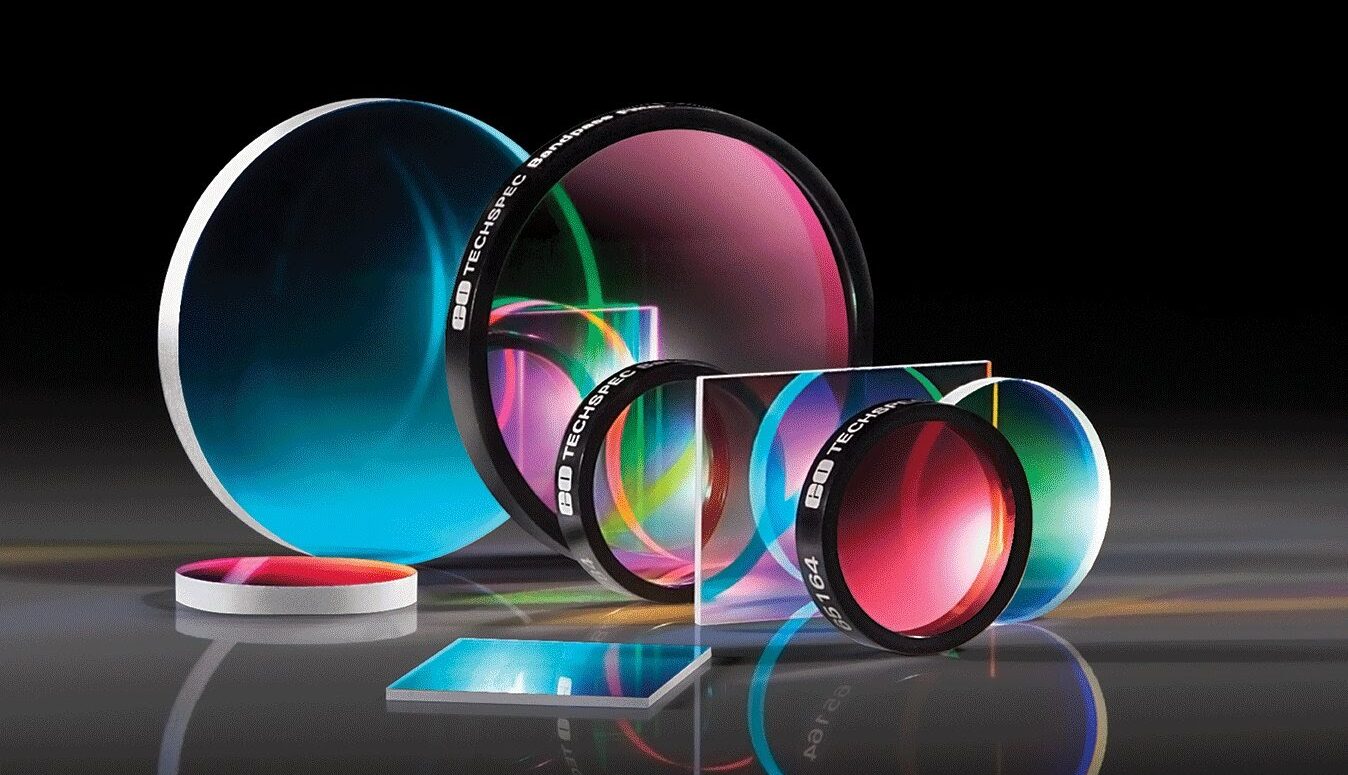
Until just a few years ago, everything related to filters in astrophotography was a territory belonging exclusively to astrophotography, whether deep sky or planetary, made with monochrome cameras.
However, during the last 5 years there has been a real boom in the market of filters for astrophotography, in this case designed for use with color cameras.
Today’s color cameras have nothing to do with the color cameras of just a few years ago. Color sensors have evolved a great deal. They are more sensitive, more efficient and more economical.
This has motivated that, nowadays, the use of these sensors together with broadband, narrowband and multiband astrophotographic filters, are the option chosen by many astrophotographers who prefer to opt for a simpler and faster way of photographing the night sky.
How do astrophotographic filters work?
As its name suggests, the function of an astrophotographic filter is to ‘filter’, in this case the light that reaches the sensor of our camera.
The entire spectrum of light that we see, and also that we do not see, is distributed along a series of more or less energetic wavelengths.
In this way we can find, in the less energetic part of the spectrum, and also invisible to us, wavelengths such as those corresponding to radio waves, radar or microwaves. At the other end we find the more energetic waves, those corresponding to gamma rays or X-rays. And between these two regions, totally invisible to the human eye, we find an area of the light spectrum called the visible spectrum, precisely because it is the part of the spectrum that we can see with our own eyes, comprised between infrared light, the less energetic part, and ultraviolet light, the more energetic part.
An astrophotographic filter allows us to select one or several specific bands of this spectrum of light, so that we will pass that range or ranges of light exclusively to the sensor of our camera, blocking the rest. This allows us to capture specific emissions from different gases in the Universe in our astrophotographs.
Broadband vs. narrowband filters
As we have just mentioned, astrophotographic filters allow you to select the band or bands of light that you want to let through to the sensor of your camera, while blocking the rest.
This has a secondary effect and a double reading that has led many users to think of these filters, not only as an instrument to increase the signal captured in certain bands of the electromagnetic spectrum, but also as a tool to block a large part of the light pollution that we suffer in environments close to cities. If we manage to block a large part of the light spectrum, allowing only a very thin line to pass to the camera sensor where the nebulae have their greatest emission, we will not only be able to block almost all the light pollution that surrounds us, but also be more efficient in our astrophotographic captures.
And this is where we can find one of the biggest differences between the astrophotographic filters available on the market.
Broadband filters, as the name suggests, allow one or more broad bands of light to pass through to the camera sensor.
Narrow-band filters, in the same way, let one or several much narrower bands of light pass to the camera sensor, especially selected in those regions of the spectrum where the Universe has a high emission of light.
Depending on the type of object we want to photograph, the camera used, and the quality of the sky from which we are going to photograph, it will be convenient to choose between one type of filter or another.

Monochrome vs. colour camera
Depending on the camera we use, we will find a different catalogue of astrophotographic filters.
Monochrome cameras only capture light with 100% of the sensor. If we do not use any filter we will capture a black and white luminance consisting of the whole visible light spectrum.
If we want to obtain a colour image made with a monochrome camera we will have to use 3 different filters: one of them will filter the red part of the light spectrum (R), another one will filter the green part (G), and the third and last one will filter the blue part (B). Additionally, we can increase the signal captured in our image by adding a luminance channel to our image (L), which consists of applying a filter that lets the entire visible light spectrum pass through, blocking infrared light on one side and ultraviolet light on the other.
As you may have deduced, to get a colour image with a monochrome camera we must capture a minimum of 3 images, RGB, and optionally we can add the luminance, LRGB.
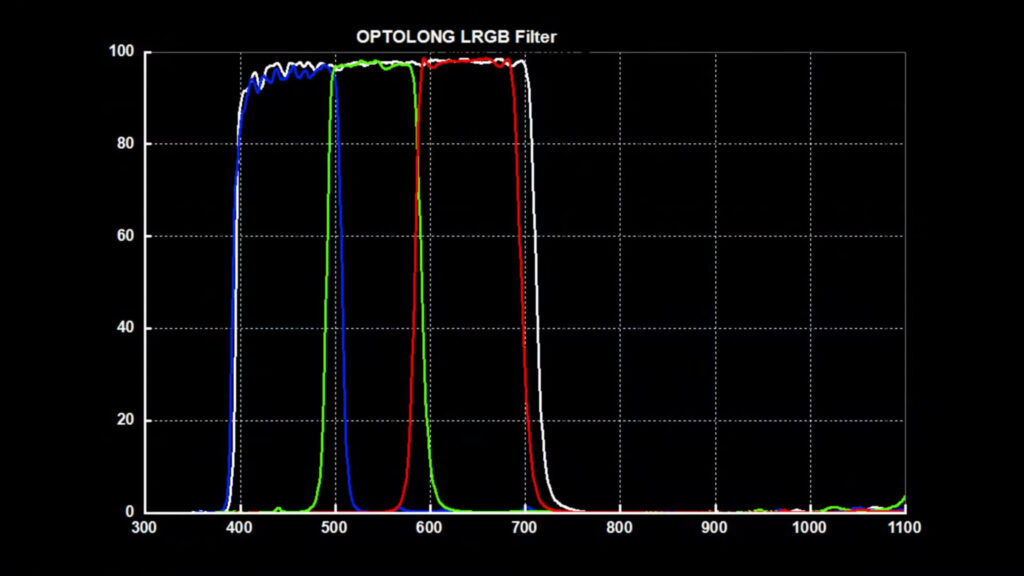
In addition to RGB or LRGB colour images, with a monochrome camera we can capture narrow-band images in regions where the Universe has high emission, such as the Hydrogen Alpha (H-Alpha), Oxygen III (OIII) or Sulphur (SII) bands.
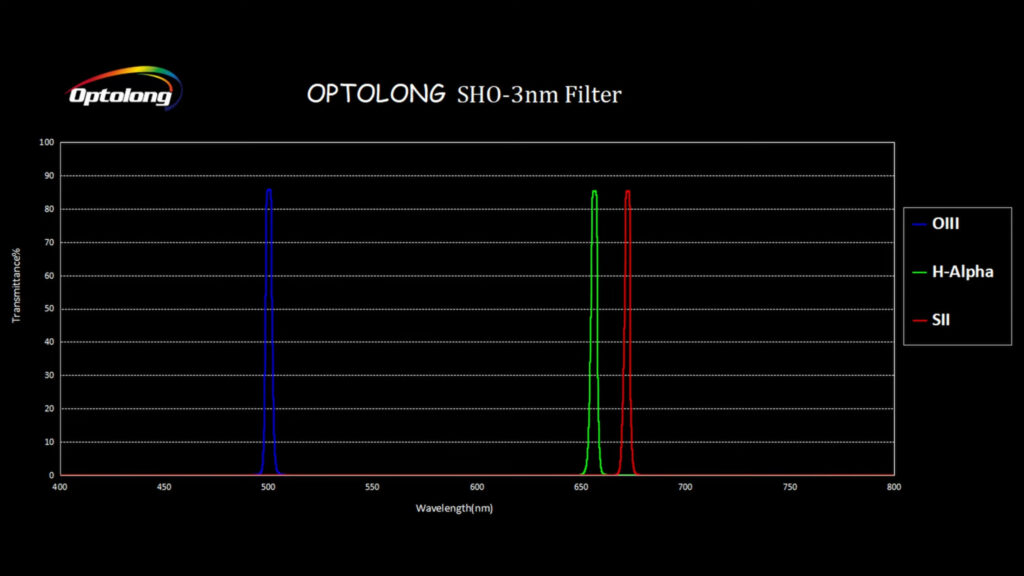
These narrow-band filters are characterised by allowing a single narrow band of light to pass through in the corresponding region of the spectrum, with greater or lesser amplitude depending on the resolution that the filter can capture. Commonly we will find amplitudes between 10nm and 3nm. The narrower the band of light, the higher the resolution we will be able to capture in that band.
Colour cameras work in a similar way to monochrome cameras. The big difference between them is that colour cameras, unlike monochrome cameras, include a Bayer matrix in front of the sensor that divides the light beam into R, G and B, so that some pixels will be in charge of capturing red light, others will capture green light, and others will capture blue light, forming a final colour image.
The great advantage over monochrome cameras is that we will have colour images from the first capture, without the need to use any filters. The main disadvantage, until now, is that colour cameras were very limited for the practice of narrow-band astrophotography, as these filters force to use only a percentage of the sensor to capture the bands photographed. For example, the H-Alpha band is located in the red part of the light spectrum, so only the pixels that capture red light will work.
However, today’s colour cameras are much more sensitive and efficient than they were just a few years ago. In addition to this, manufacturers are developing more and more models of narrow band filters exclusively for colour cameras, the so-called multiband filters.
Multiband filters
As their name suggests, multiband filters are characterised by allowing 2 or more bands of light to pass through to the sensor of our camera. Therefore, we are talking about filters designed to be used almost exclusively with colour astrophotographic cameras, since these cameras will be the ones that will be able to register the filtered bandpasses in each of the colour channels.
We can differentiate between 2 types of multiband filters: wideband and narrowband multiband filters.
The wide multiband filters let through a series of bands of large amplitude, generally located in the red and blue regions of the electromagnetic spectrum, regions in which the nebulae of the Universe emit the most light.
This type of filters are widely used as contrast filters, as they block an important part of the electromagnetic spectrum in which there is hardly any emission in space, allowing us to obtain more contrasted and detailed images. They are also filters used as anti-light pollution filters for the same reason, they block an important part of the spectrum with very little emission in space, but where we can find a large emission of light from cities. Therefore, we get more contrasted and cleaner images of light pollution. And finally, some of these wideband multiband filters are also used in visual astronomy, as they increase the contrast and make it easier to see certain faint objects in the deep sky.
Some of the most common and well-known wideband multiband filters are the CLS (City Light Suppression), or the UHC (Ultra High Contrast). Both filters are efficient in gaining contrast and reducing light pollution from environments with medium levels of light pollution.

However, these filters are still too restrictive when it comes to photographing certain faint deep sky objects, such as dark nebulae, or objects such as galaxies, whose light emission is almost all over the electromagnetic spectrum.
For these cases, brands such as Optolong or Antlia have in recent years developed multi-band wideband filters with a series of light steps that make it possible to capture such objects from relatively light-polluted skies. Objects that until now required really clean and dark skies.
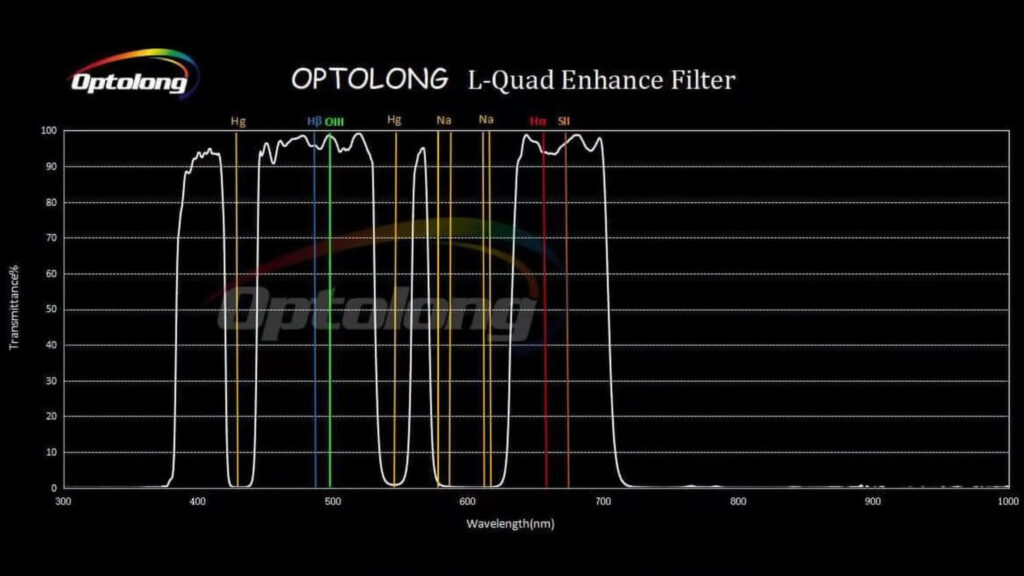
On the other hand, the narrow multiband filters only let through to the sensor 2 or more very thin bands of between 10nm and 3nm, especially selected in those regions of the spectrum where the Universe has its highest light emission. Normally we will find these bands of light located in the H-Alpha and OIII region, although we can find other models that also let through H-Beta or SII. Therefore we can deduce that they are filters for use exclusively with emission nebulae, and will not be useful for photographing reflection nebulae, galaxies, dark nebulae or star clusters.
The thinner these bands are, the more restrictive the filter will be and the higher resolution it will give us to capture the finer details of these objects. However, we must take into account the equipment in which they will be used, as we may run out of light in dark equipment. These filters are usually at their most efficient on equipment with brightness ratios between f4 and f7. And although it sounds contradictory, they do not usually perform well with very fast equipment such as the RASA f2. Brands such as Optolong are developing special narrow multiband filters for this type of equipment.
Narrow multiband filters are incredibly effective at reducing light pollution, and in fact this is possibly the functionality that many amateurs look for in them. By blocking more than 99% of the electromagnetic spectrum we are able to drastically reduce ambient light pollution. This allows us to practice astrophotography even from inside big cities.
However, we should not rule out the use of this type of filters from dark environments, where they can really make a difference, allowing us to capture a clean signal in high resolution and with a great richness of detail in narrow band.
Narrowband multiband filters have opened the door for many amateurs to practice narrowband astrophotography with colour cameras, a field that until only a few years ago was the exclusive domain of monochrome cameras. For example, a dual band H-Alpha and OIII narrow-band filter combined with a colour camera allows us to capture H-Alpha filtered light in the R-channel of the camera, and OIII filtered light in the G- and B-channels. In this way we can capture in a fraction of the time we would need with a monochrome camera both light bands and produce narrow band colour palettes with colour cameras.

Emission nebulae and other deep-sky objects
As we have already anticipated in this article, the choice of filter to use will vary depending on the astronomical object to be photographed. In a very basic way we could divide deep sky objects into 3 main categories: emission nebulae, reflection nebulae, dark nebulae, galaxies and star clusters.
Emission nebulae:
This type of nebula is incredibly abundant in the Universe. The large emission nebulae that we can photograph in our sessions belong to our own galaxy, the Milky Way. But it is also common to detect such nebulae in other nearby galaxies, such as M31, the large Andromeda galaxy, or M33, the Triangulum galaxy.
These nebulae are characterised by their own light emission, hence their name. And this light emission is produced because the radiation emitted by the surrounding stars ionises the gases that compose them, mainly hydrogen and helium, although it is also common to find other gases such as Oxygen III or sulphur, glowing on their own.
Emission nebulae usually glow with intense red and turquoise colours.

Reflection nebulae:
As their name suggests, these nebulae are characterised by reflecting the light of nearby stars. For this reason most reflection nebulae found in the deep sky glow blue, as they are usually the remnants of the original nebulae that formed certain clusters of young, very hot stars that glow blue. The blue colour of these young stars is eventually reflected in the surrounding nebular remnants.
Therefore these nebulae do not emit their own brightness, but only reflect it.
The best known example of a reflection nebula is the nebulosity surrounding the cluster M45, the Pleiades. These shreds of blue are the remnants of the original nebula from which the stars in the cluster were born.
Another well-known example of reflection nebulae is the Witch’s Head nebula, IC 2118, in the constellation Orion, which is the largest apparent reflection nebula in the night sky, and in this case reflects the powerful light of the blue giant star Rigel.

Dark nebulae:
When we talk about dark nebulae we are talking about exactly the same thing as when we talk about reflection nebulae, but in this case we do not have nearby stars illuminating the nebulosity with their light. In fact it is very common to find dark nebulae with some reflection regions, such as the shark nebula, LDN 1235, in the constellation Cepheus.
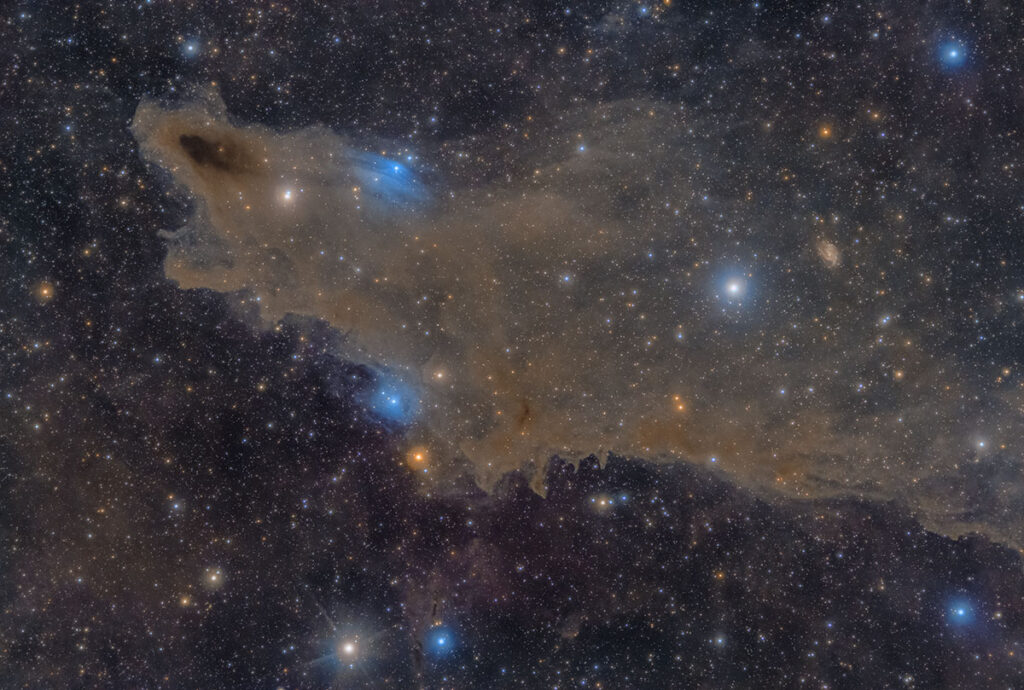
Galaxies:
Galaxies are the most distant objects that we can photograph in our astrophotography sessions, because among all the objects that we can access with our amateur equipment, they are the only ones that lie outside our own galaxy, the Milky Way.
Each of the galaxies that we can target with our equipment consists of its own stars, emission nebulae, dark nebulae and star clusters. However, our amateur equipment cannot resolve these details. Therefore, when we photograph other galaxies we are receiving their light across the entire electromagnetic spectrum.
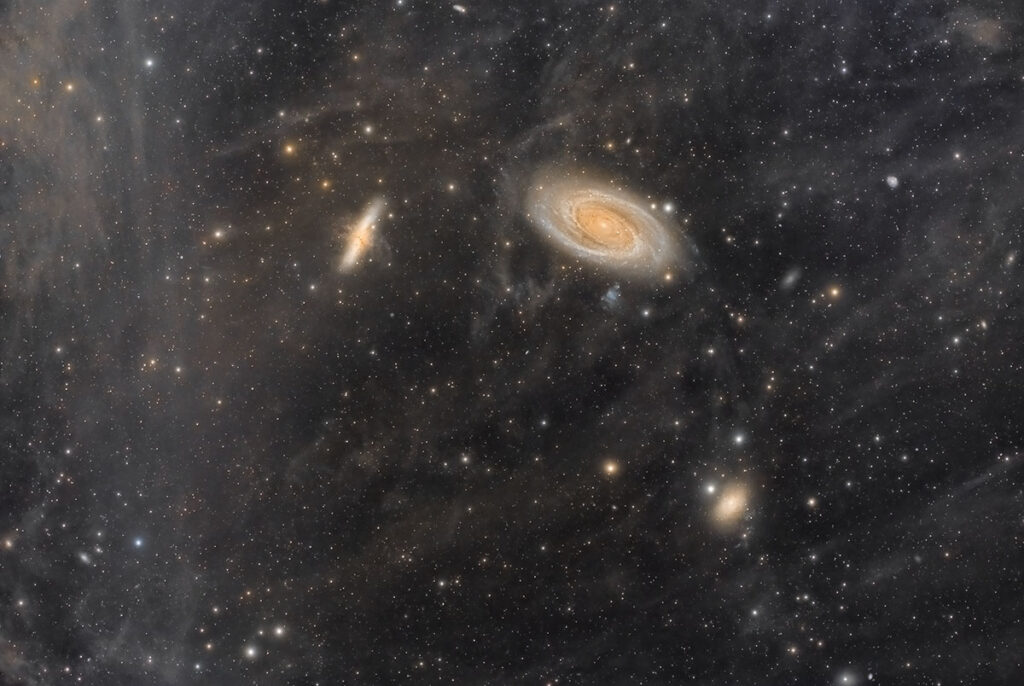
Star clusters:
Within the group of star clusters we can find different types of star clusters, and some with special characteristics, such as the Pleiades cluster, which we have already talked about because it also combines a reflection nebula in its surroundings. So in this group we will include open star clusters and globular clusters.
These objects are usually characterised by being in a nebulosity-free environment, and by including different types of stars, with different magnitudes and colour spectra. For this reason, we could say that star clusters also emit their light across the entire electromagnetic spectrum.
By paying attention to this information we can decide which filter or filters to use for each astrophotography session. For example, if we are going to photograph emission nebulae, we can opt for narrow-band filters with a monochrome camera, or narrow multiband filters with a colour camera. This will also give us the option to develop the session from light-polluted environments.
If on the other hand we are going to photograph reflection nebulae, dark nebulae, galaxies or star clusters, objects that as we have seen do not emit light of their own, or emit light in the entire electromagnetic spectrum, we will have to opt for a wide filter that only blocks the infrared and ultraviolet part of the light spectrum, or for no filter at all. And of course, we should conduct our astrophotography session from as dark an environment as possible.
If we cannot travel to such dark environments, we can opt for a multiband wideband light pollution filter, although we must be aware that we will be sacrificing an important part of the light received from these objects.
But the reality is that in many cases we will not be able to choose clearly between one type of filter or another, but we will find ourselves with combined nebulae, with regions of emission and regions of reflection or dark nebulosity.
In these cases we can plan our sessions to capture a part of the session in LRGB or with a UV-IR blocking filter to capture the most information in luminance, and dedicate another part of the session, or a different night, to capture the emission nebulae in narrow band, and finally, during the processing, combine both signals in a single image that shows us both the natural details of the reflection nebulae or dark nebulae, and the powerful brightness of the emission nebulae.
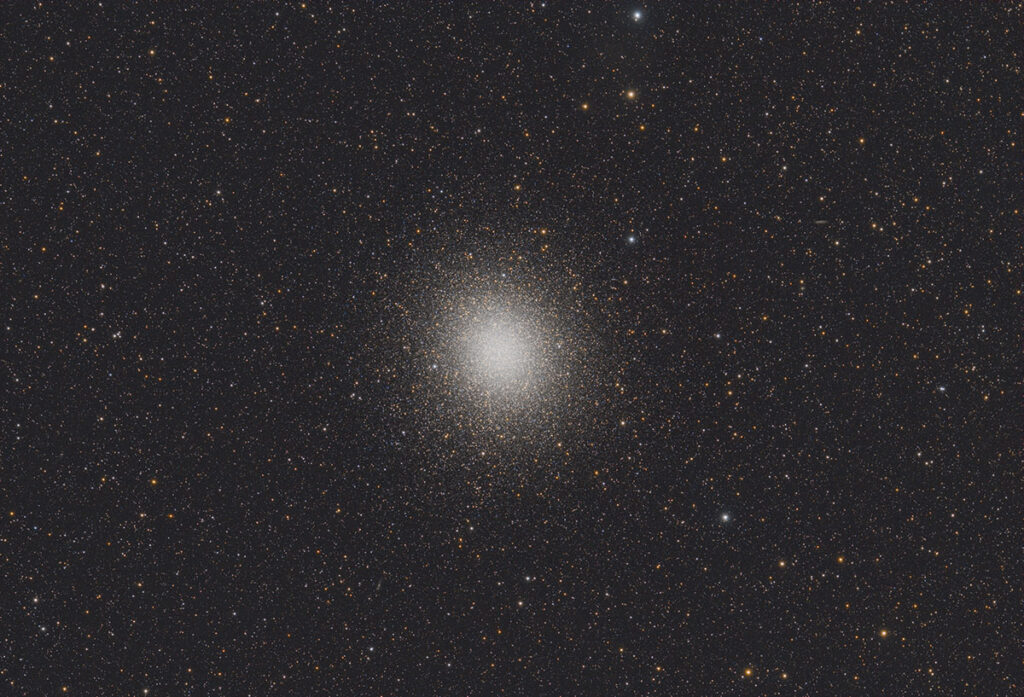
Not forgetting planetary astrophotography
Planetary astrophotography is one of the great forgotten ones, but it also has a lot to say in the world of astrophotographic filters. But in the case of planetary astrophotography the use of filters is more limited and focused on the enhancement of certain details in planetary atmospheres.
LRGB filters in planetary astrophotography not only allow us to obtain colour images, but also allow us, in certain situations such as lunar astrophotography, to discriminate by colour band according to the level of atmospheric turbulence we have, since atmospheric turbulence affects in different ways depending on the wavelength captured, being the red band the least affected in general.
It is also very common to use infrared filters, which allow us to go a step further in obtaining a more stable image that is less affected by atmospheric turbulence, and also allow us to capture details of the lower layers of planetary atmospheres.
Or the use of ultraviolet filters, methane filters, etc., which would be specifically applicable when photographing certain planets in the Solar System, such as Venus, Jupiter or Saturn.
